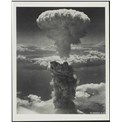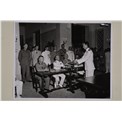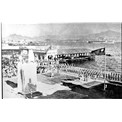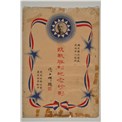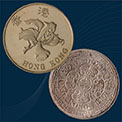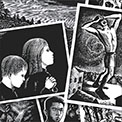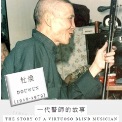-
History & Society
- Education in Pre-war Hong Kong
- History of Taikoo Sugar Refinery
- Hong Kong Products Exhibition
- Local Festivals Around the Year
- Post-war Industries
- Pre-war Industry
- The Hong Kong Jockey Club Archives
- Tin Hau Festival
- Memories We Share: Hong Kong in the 1960s and 1970s
- History in Miniature: The 150th Anniversary of Stamp Issuance in Hong Kong
- A Partnership with the People: KAAA and Post-war Agricultural Hong Kong
- The Oral Legacies (I) - Intangible Cultural Heritage of Hong Kong
- Hong Kong Currency
- Hong Kong, Benevolent City: Tung Wah and the Growth of Chinese Communities
- The Oral Legacies Series II: the Representative List of the Intangible Cultural Heritage of Hong Kong
- Braving the Storm: Hong Kong under Japanese Occupation
- A Century of Fashion: Hong Kong Cheongsam Story
Geography & EnvironmentArt & Culture- Calendar Posters of Kwan Wai-nung
- Festival of Hong Kong
- Ho Sau: Poetic Photography of Daily Life
- Hong Kong Cemetery
- Sketches by Kong Kai-ming
- The Culture of Bamboo Scaffolding
- The Legend of Silk and Wood: A Hong Kong Qin Story
- Journeys of Leung Ping Kwan
- From Soya Bean Milk To Pu'er Tea
- Applauding Hong Kong Pop Legend: Roman Tam
- 他 FASHION 傳奇 EDDIE LAU 她 IMAGE 百變 劉培基
- A Eulogy of Hong Kong Landscape in Painting: The Art of Huang Bore
- Imprint of the Heart: Artistic Journey of Huang Xinbo
- Porcelain and Painting
- A Voice for the Ages, a Master of his Art – A Tribute to Lam Kar Sing
- Memories of Renowned Lyricist: Richard Lam Chun Keung's Manuscripts
- Seal Carving in Lingnan
- Literary Giant - Jin Yong and Louis Cha
Communication & Media- Hong Kong Historical Postcards
- Shaw Brothers’ Movies
- Transcending Space and Time – Early Cinematic Experience of Hong Kong
- Remembrance of the Avant-Garde: Archival Camera Collection
- Down Memory Lane: Movie Theatres of the Olden Days
- 90 Years of Public Service Broadcasting in Hong Kong
- Multifarious Arrays of Weaponry in Hong Kong Cinema
-
History & SocietyGeography & EnvironmentArt & Culture
-
View Oral History RecordsFeatured StoriesAbout Hong Kong Voices
-
Hong Kong Memory
Victory in the War of Resistance and Hong Kong after the War
As the tide turned, 1945 saw Chinese forces gradually regaining control of their country and the Allies winning battle after battle in Europe. After Nazi Germany’s surrender on 7 May, the Allied forces were able to concentrate their military power on Japan, attacking its forces from all sides. On 26 July, the heads of state of China, the US and Britain jointly issued the Potsdam Declaration, reiterating the demand for Japan to surrender unconditionally originally made in the Cairo Declaration in 1943 or face ‘prompt and utter destruction’. The US dropped an atomic bomb on Hiroshima on 6 August, followed by another one on Nagasaki on 9 August. Emperor Hirohito of Japan broadcast the Imperial Rescript on the Termination of the War on 15 August, declaring Japan’s unconditional surrender.
On 2 September, Japan, China, the US, Britain and the USSR held a ceremony on board the battleship USS Missouri berthed in Tokyo Bay at which the Japanese Instrument of Surrender was signed. In the morning of 9 September, a ceremony took place in Nanjing at which He Yingqin, Commander-in-Chief of the Chinese Army, accepted Japan’s surrender on the orders of Chiang Kai-shek, Commander-in-Chief of the Allied forces in the Chinese Theatre. In Hong Kong on 16 September, Rear-Admiral Cecil Harcourt of the British Navy accepted Japan’s surrender in Government House at a ceremony witnessed by Major-General Pan Huaguo of China and representatives of the US and other Allies. The Chinese victory in the War of Resistance Against Japanese Aggression was complete.
After the war, Hong Kong was a scene of almost total desolation and the city was in desperate need of reconstruction. The population had plunged to around 600,000 and more than 20,000 buildings had been damaged during the war. The British military government implemented controls on food, fuel and other necessities and began importing them in large quantities from overseas to stabilise supplies. On 24 September 1945, it declared Japanese military notes invalid and reinstated the Hong Kong dollar as the city’s official currency. Many Hong Kong residents returned as the economy recovered, and by the end of 1947 the city’s population had even surpassed the pre-war figure, having grown to 1.8 million.
Photos
Copyright © 2012 Hong Kong Memory. All rights reserved.






